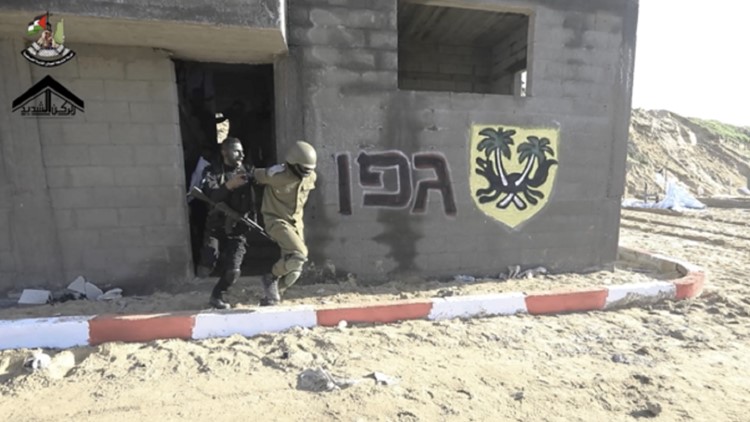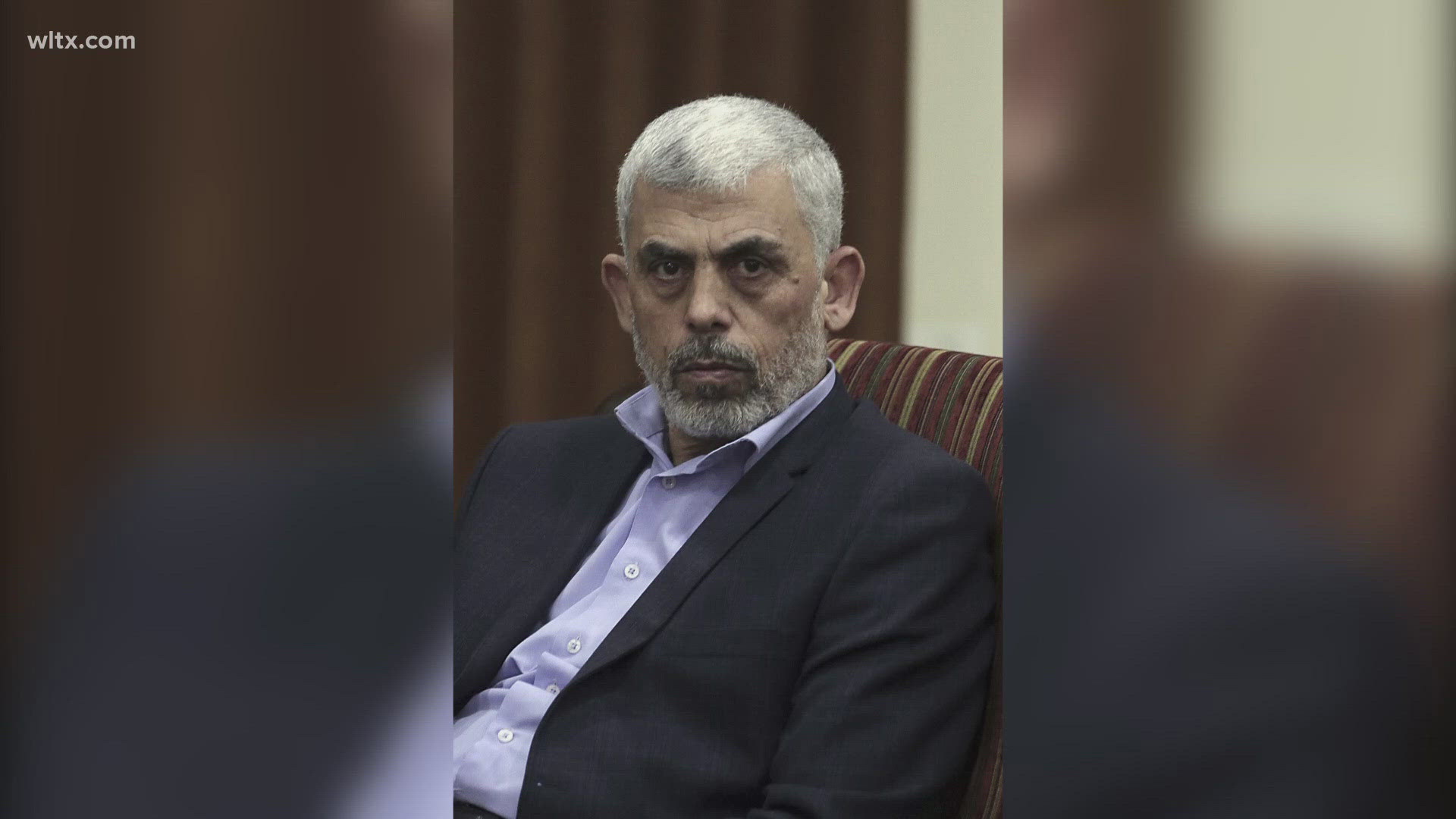NEW JERSEY, USA — A rocket-propelled warhead fizzes towards an Israeli military outpost. Armed Hamas militants storm a settlement in white pick-up trucks. An Israeli soldier, hands behind his back, is led off as a hostage, a gun to his back.
The scenes look like those filmed during Hamas' terror attack on Israel on Saturday. They are, in fact, from training videos published online by the militant wing of the group months ago.
"Attack training was conducted on the ground simulating an assault on enemy settlements and sites around the Gaza Strip," the group said in a message accompanied by a video posted online in September, according to the Israeli newspaper Yedioth Ahronoth.
The training video showed Hamas fighters in a command center and rockets being fired from the Gaza shore. Hamas fighters fire mortars and heavy machine guns and attack a mock Israeli Defense Forces, or IDF, outpost before storming through a fake settlement in white pick-up trucks.

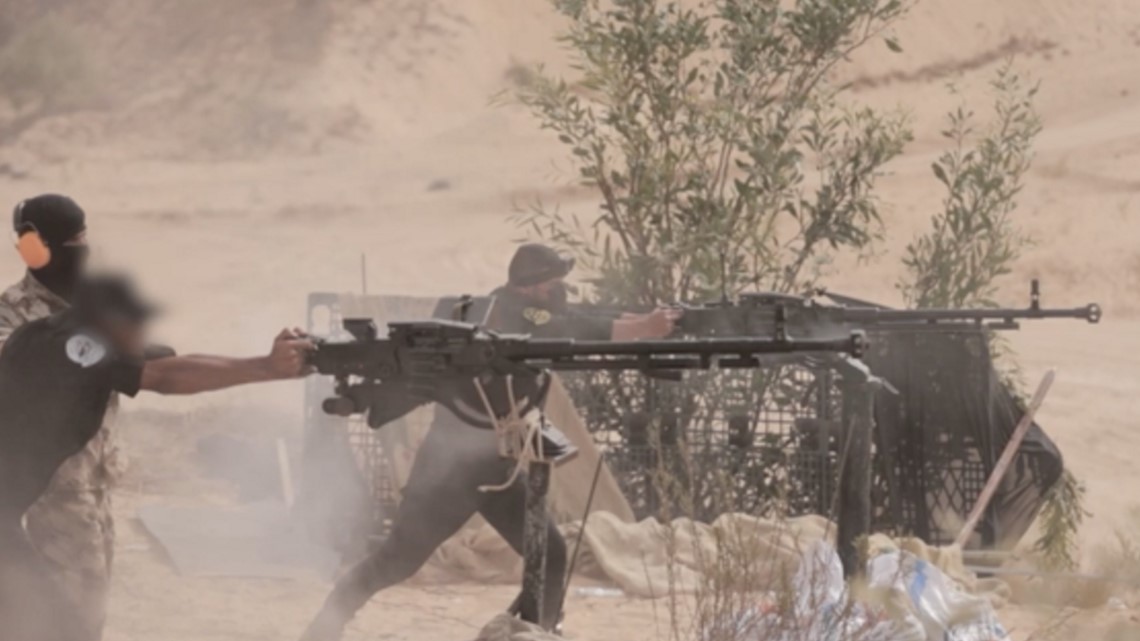
In another video, from May, body camera footage shows combatants moving through rooms shooting at targets. Another, from December, shows Hamas fighters storming a makeshift town and taking hostages dressed as Israeli soldiers. On the walls of the mock compound, the words "we will free all our prisoners" are scrawled in Arabic and Hebrew.
The sleek, high-definition videos, complete with drone shots, appear almost interchangeable with the real-world videos of the carnage Hamas fighters unleashed on southern Israel on Oct. 7, after they breached the militarized borders of the besieged Gaza Strip with tools, construction equipment and even paragliders. They ambushed soldiers at checkpoints and murdered civilians in farming communities, or kibbutzim, taking more than 100 others hostage.
The mere existence of these Hamas propaganda videos, some of which have been online for several months, will fuel increasingly urgent questions over how, despite the Jewish state's U.S.-backed, world-class intelligence agencies, Hamas, in the words of an Israeli military spokesperson, "surprised us."
It is hard to imagine that Israel's intelligence services, which have spent years infiltrating the terror groups in the region, were unaware of the videos, photos and news coverage about the training maneuvres. The French news agency AFP published photos of Hamas exercises in September, and Israeli media covered them extensively.
"The timing of the event is not accidental, one of the goals of the Palestinian factions is to demonstrate to Israel their readiness for a new war," Yedioth Ahronoth reported on Sept. 12. "This is how Hamas prepares for war with Israel."

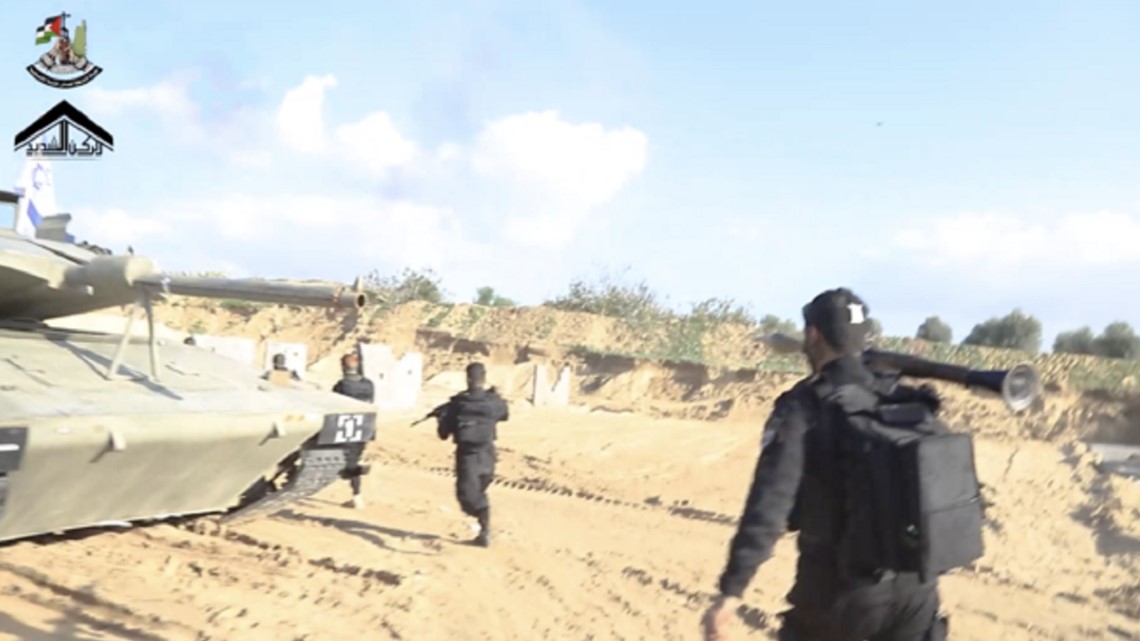
"Israel surely saw [the training videos]," the Reuters news agency quoted a source close to Hamas as saying, "but they were convinced that Hamas wasn't keen on getting into a confrontation."
The day after those reports surfaced — more than three weeks before the Hamas attack — Israel's security cabinet convened, though news reports make no mention of Prime Minister Benjamin Netanyahu discussing the exercises with officials. It is not clear whether the cabinet meeting was convened as a result of the Hamas drills.
An IDF spokesperson did not respond to a CBS News question about whether the Hamas videos had been seen before Saturday's attack or taken as a warning of an actual, imminent assault.
How the Israeli defense establishment was seemingly duped by Hamas has been the subject of intense speculation in the aftermath of the terror strike. Reuters has quoted sources saying a years-long intelligence operation seemed to have convinced Israel that Hamas didn't want — and wasn't prepared for — a war in the wake of the last conflict, which spanned two bloody weeks in May 2021.
Some reports have suggested that Hamas deliberately worked to convince Israel it was more interested in ensuring that workers in Gaza had access to jobs in Israel than it was in mounting an attack.
"Hamas was able to build a whole image that it was not ready for a military adventure against Israel," the source close to the group told Reuters.
In March 2023, for example, the head of the group's military wing, the al-Qassam Brigades, said: "It is the time to give the resistance in the West Bank and Jerusalem space and opportunity to lead the confrontation with the Israeli occupation."
"We believed that the fact that they were coming in to work and bringing money into Gaza would create a certain level of calm," another Israeli army spokesperson told Reuters. "We were wrong."

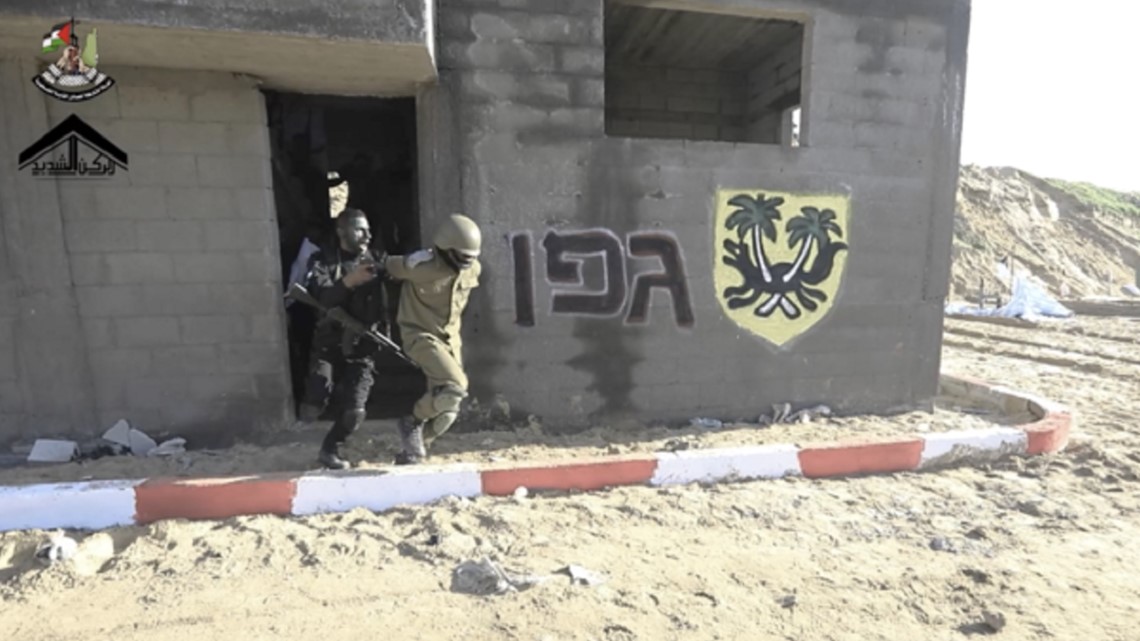
On the day of the unprecedented attack, Hamas was helped by numerous logistical and intelligence lapses, according to the New York Times. The newspaper quoted four senior Israeli intelligence officials as saying Israel's spies had "failed to monitor key communication channels used by Palestinian attackers," they had become "overly confident" with their border surveillance systems and there was "a willingness to accept at face value assertions by Gazan military leaders, made on private channels that the Palestinians knew were being monitored by Israel, that they were not preparing for battle."
Shir Hever, an economist who researches the Israeli arms trade and the economic aspects of the Israeli occupation of the Palestinian territory, noted that Hamas struck on the last day of Sukkot, a weeklong Jewish holiday during which Israel has, for decades, sealed the Gaza borders.
Israeli officials, Hever said, "are so used to the closure that they didn't expect an attack during Sukkot. They forgot that the closure is an act of oppression and must be enforced with force."
Six days before the Hamas assault, Israeli National Security Adviser Tzachi Hanegbi told Israel's military radio channel: "Hamas is very, very restrained" and "understands the implications of further defiance."
"There is a calm," added Hanegbi. "But it's hard to estimate how long it will last."
CBS News' Khaled Wassef contributed to this report.

